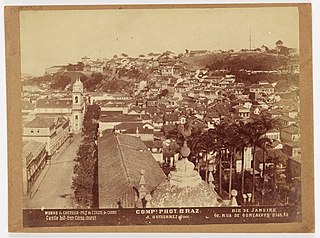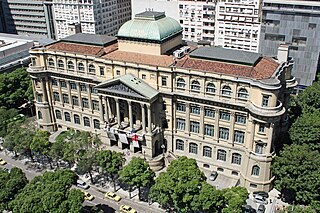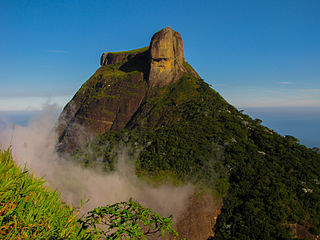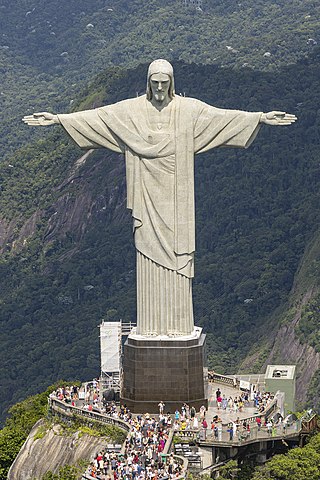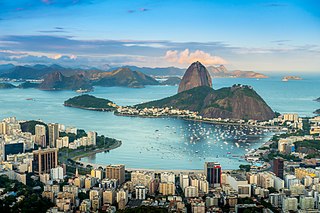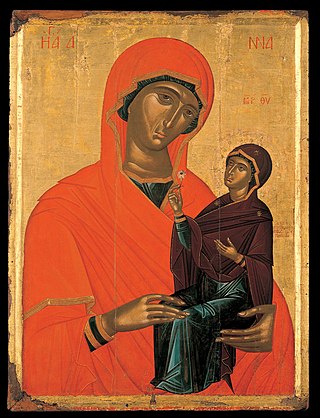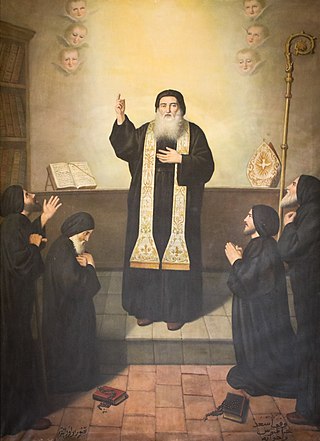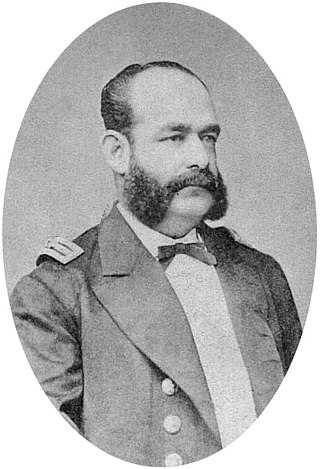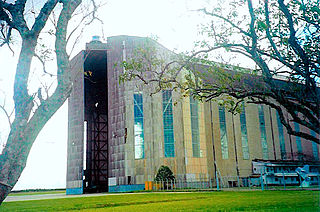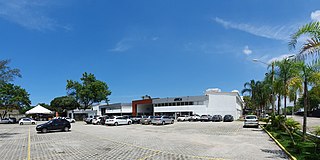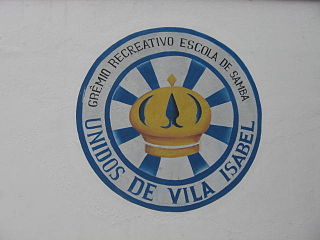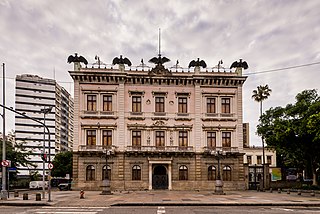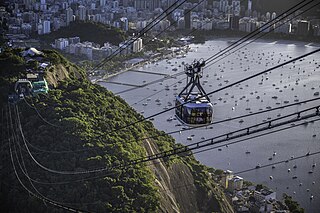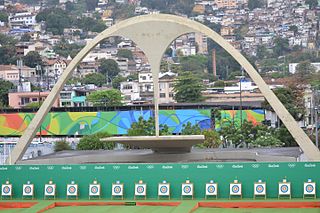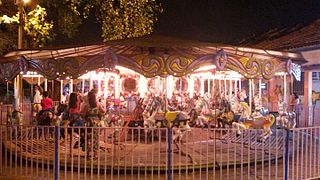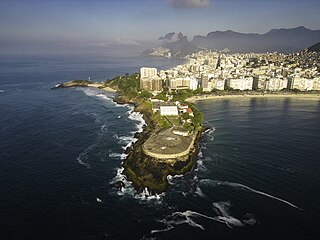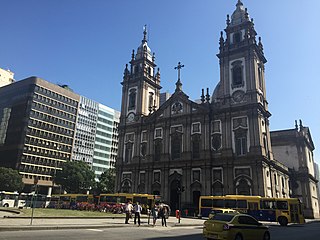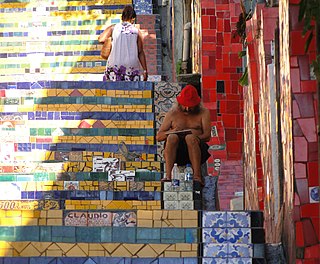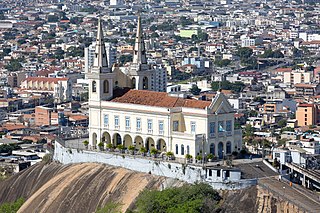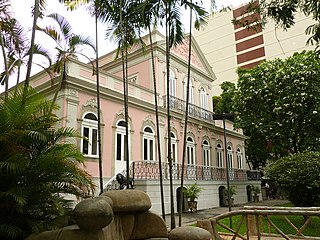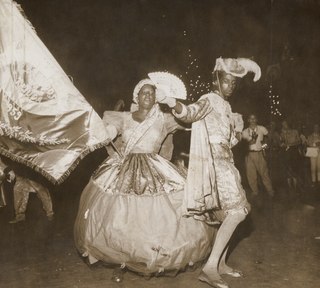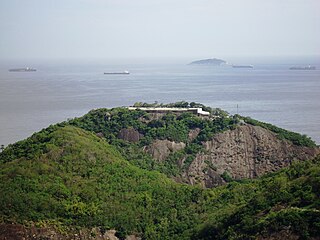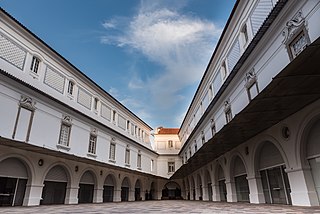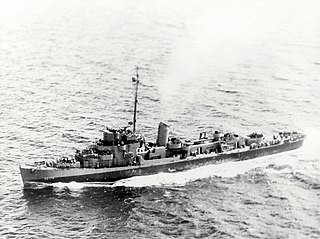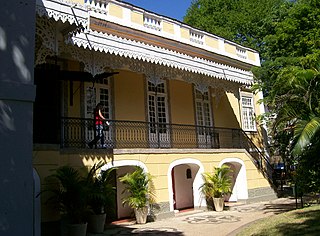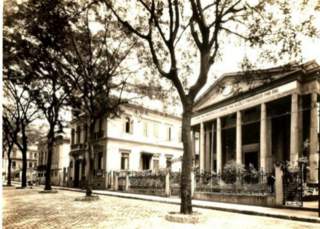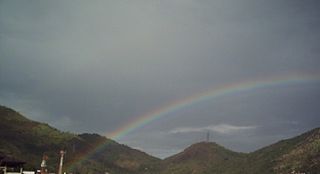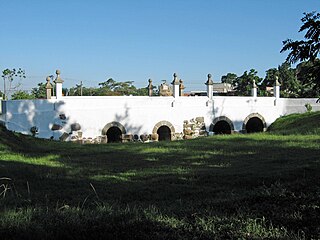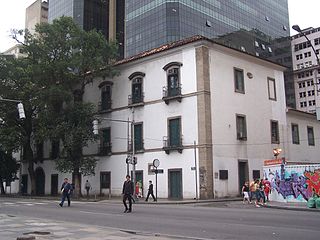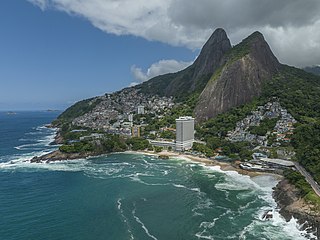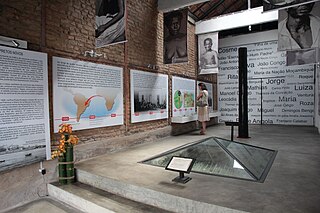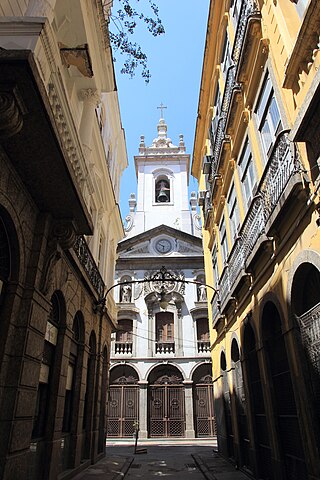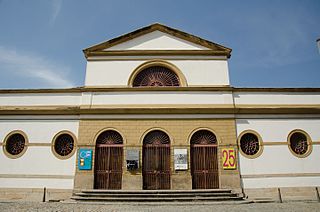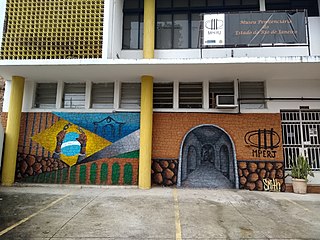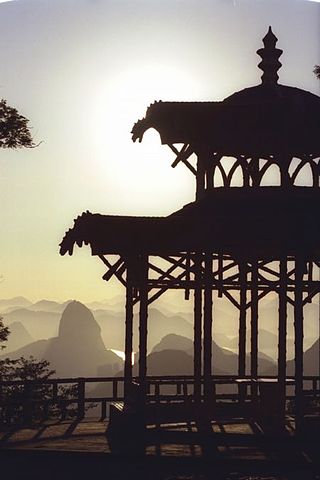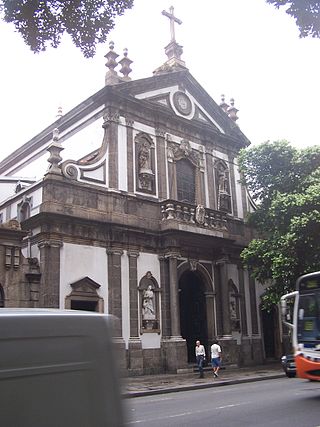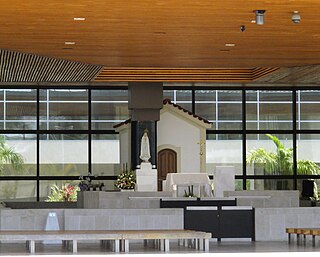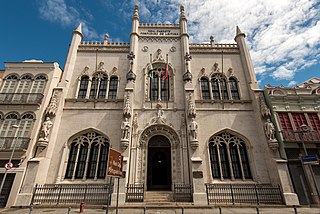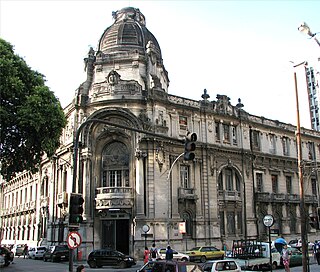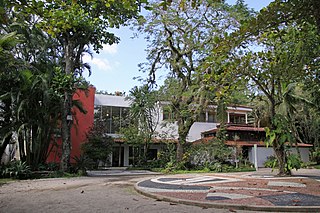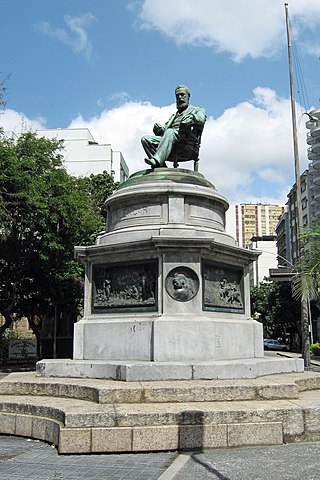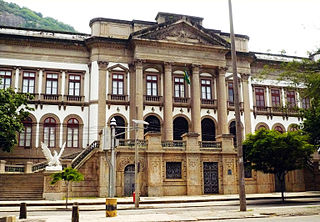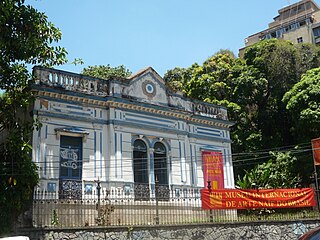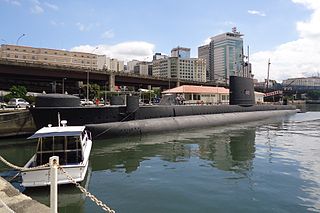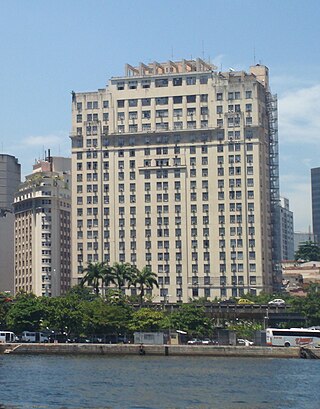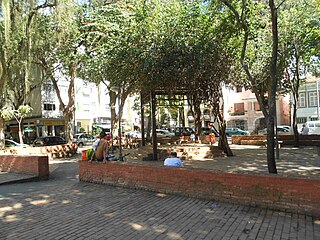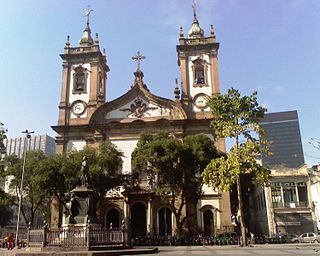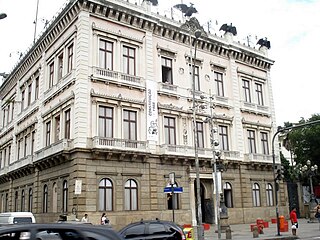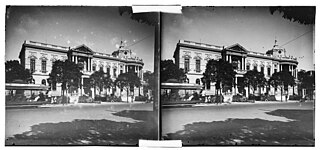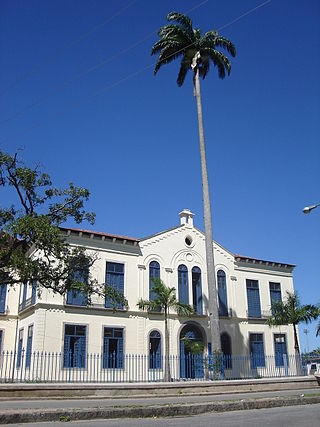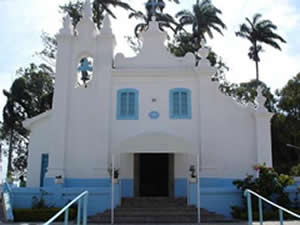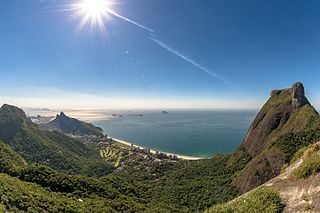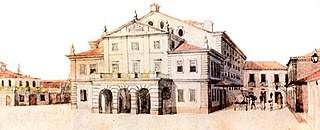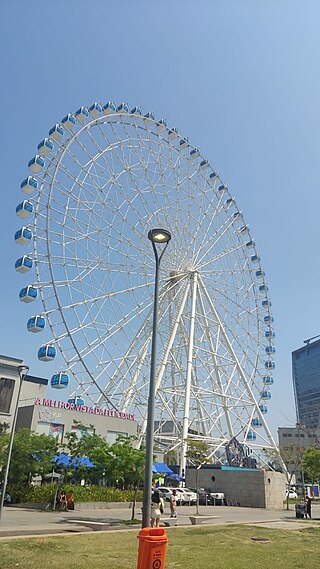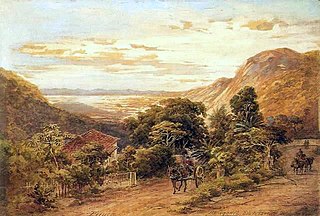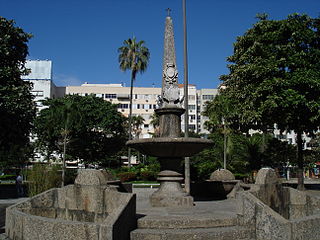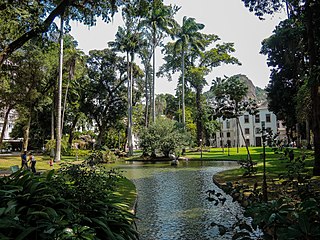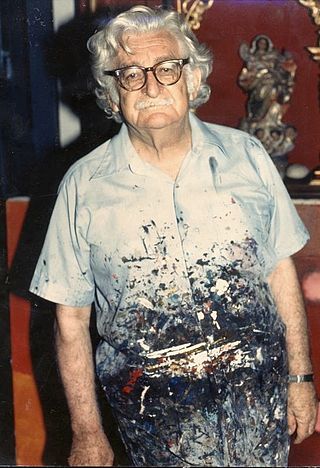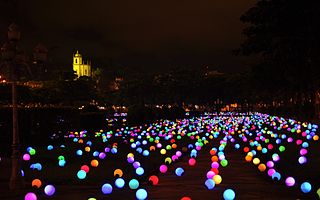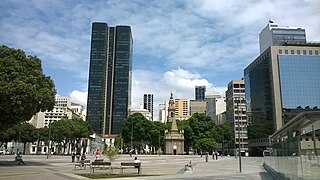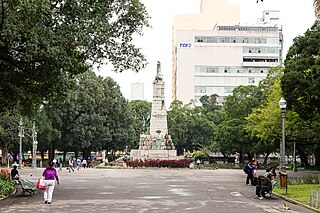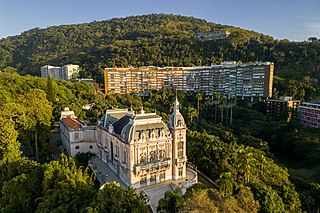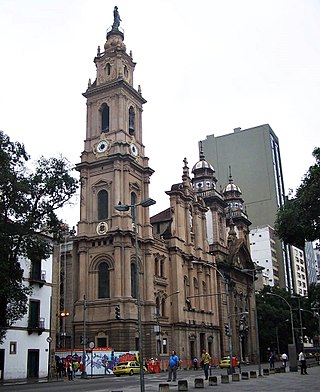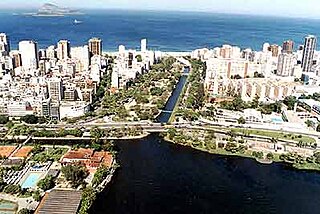91 Sights in Rio de Janeiro, Brazil (with Map and Images)
Legend
Premium Sights
Book tickets, guided tours and activities in Rio de Janeiro.
Guided Free Walking Tours
Book free guided walking tours in Rio de Janeiro.
Welcome to your journey through the most beautiful sights in Rio de Janeiro, Brazil! Whether you want to discover the city's historical treasures or experience its modern highlights, you'll find everything your heart desires here. Be inspired by our selection and plan your unforgettable adventure in Rio de Janeiro. Dive into the diversity of this fascinating city and discover everything it has to offer.
Sightseeing Tours in Rio de JaneiroActivities in Rio de JaneiroMorro do Castelo was a geographical feature that existed in the city of Rio de Janeiro, Brazil. The hill was one of the city's founding points in the sixteenth century and housed historical landmarks of great importance, such as colonial fortresses and Jesuit buildings. Despite this, it was destroyed in an urban reform in 1922.

The Grêmio Recreativo Escola de Samba Portela or Portela for short, is a traditional samba school, founded in 1923, in Rio de Janeiro, Brazil. The school has the highest number of wins in the top-tier Rio parade, with 22 titles in total, including the 2017 Carnival parade.
The National Library of Brazil is the depository of the bibliographic and documentary heritage of Brazil. It is located in Rio de Janeiro, the capital city of Brazil from 1822 to 1960, more specifically at Cinelândia square.
The Museum of Tomorrow is a science museum in the city of Rio de Janeiro, Brazil. It was designed by Spanish neofuturistic architect Santiago Calatrava, and built next to the waterfront at Pier Maua. Its construction was supported by the Roberto Marinho Foundation and cost approximately 230 million reais. The building was opened on 17 December 2015, with President Dilma Rousseff in attendance.
Pedra da Gávea is a monolithic mountain in Tijuca Forest, Rio de Janeiro, Brazil. Composed of granite and gneiss, its elevation is 844 metres (2,769 ft), making it one of the highest mountains in the world that ends directly in the ocean. Trails on the mountain were opened up by the local farming population in the early 19th century; today, the site is under the administration of the Tijuca National Park.
Christ the Redeemer is an Art Deco statue of Jesus in Rio de Janeiro, Brazil, created by French-Polish sculptor Paul Landowski and built by Brazilian engineer Heitor da Silva Costa, in collaboration with French engineer Albert Caquot. Romanian sculptor Gheorghe Leonida sculpted the face. Constructed between 1922 and 1931, the statue is 30 metres (98 ft) high, excluding its 8-metre (26 ft) pedestal. The arms stretch 28 metres (92 ft) wide. It is made of reinforced concrete and soapstone. Christ the Redeemer differs considerably from its original design, as the initial plan was a large Christ with a globe in one hand and a cross in the other. Although the project organizers originally accepted the design, it later changed to the statue of today, with the arms spread out wide.
Natural Monument of the Sugarloaf Mountain and Urca Hills is a complex of hills located in the Urca neighborhood of the city of Rio de Janeiro, Brazil. It is composed of the Sugar Loaf Hill and the Urca Hill. Along with the statue of Christ the Redeemer, it is the largest postcard of the city of Rio de Janeiro and one of the most famous in Brazil. Due to its unique characteristics, bordered by the waters of Guanabara Bay, it is an international tourist reference for the city.
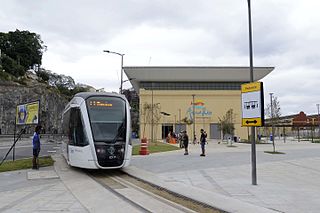
The Marine Aquarium of Rio de Janeiro, or AquaRio, is a public aquarium located in the Gamboa neighborhood, in the port zone of Rio de Janeiro, Brazil. With a constructed area of about 26,000 square metres (280,000 sq ft), it is located to the west of Muhammad Ali Square. It is considered the largest marine aquarium in South America.
9. Sant'Ana
According to apocrypha, as well as Christian and Islamic tradition, Saint Anne was the mother of Mary, the wife of Joachim and the maternal grandmother of Jesus. Mary's mother is not named in the Bible's canonical gospels. In writing, Anne's name and that of her husband Joachim come only from New Testament apocrypha, of which the Gospel of James seems to be the earliest that mentions them. The mother of Mary is mentioned but not named in the Quran.
10. Estátua de Antônio Carlos Jobim
Antônio Carlos Brasileiro de Almeida Jobim, also known as Tom Jobim, was a Brazilian composer, pianist, guitarist, songwriter, arranger, and singer. Considered as one of the great exponents of Brazilian music, Jobim merged Samba with Cool jazz in the 1960s to create Bossa nova, with worldwide success. As a result, he is regarded as one of the fathers of bossa nova.
11. GRESE Império da Tijuca
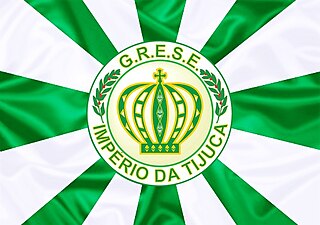
Recreativo Grêmio School of Educativa Empire of Tijuca is a Brazilian samba school in the city of Rio de Janeiro. The school brings, added to the name, the term "educational", because the main concern, at the time of its foundation, was with education.
12. Morro de São Maron
Maron, also called Maroun or Maro, was a 4th-century Syriac Christian hermit monk in the Taurus Mountains whose followers, after his death, founded a religious Christian movement that became known as the Maronite Church, in full communion with the Holy See and the Catholic Church. The religious community which grew from this movement are the modern Maronites.
13. Almirante Miguel Grau
Miguel María Grau Seminario was a Peruvian Navy officer and politician best known for his actions during the War of the Pacific. He was nicknamed "Gentleman of the Seas" for his kind and chivalrous treatment of defeated enemies and is held in high esteem by both Peruvians and Chileans. Grau is an iconic figure for the Peruvian navy, and one of the most famous naval officers from the Americas.
14. GRES Estação Primeira de Mangueira

Grêmio Recreativo Escola de Samba Estação Primeira de Mangueira, or simply Mangueira, is a samba school in Rio de Janeiro, Brazil. The school was founded on April 28, 1928, by Carlos Cachaça, Cartola, Zé Espinguela, among others. It is located at the Mangueira neighborhood, near the region of Maracanã.
15. Sambadrome Marquês de Sapucaí
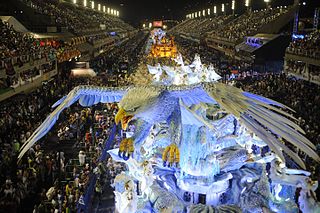
The Sambadrome Marquês de Sapucaí is a purpose-built parade area built for the Rio Carnival in Rio de Janeiro, Brazil. The venue is also known as Passarela Professor Darcy Ribeiro or simply the Sambódromo in Portuguese or Sambadrome in English. It is located in the downtown area of Cidade Nova in Rio de Janeiro, and is the place where samba schools parade competitively each year during the Rio Carnival. The parades attract many thousands of Brazilians and foreign tourists each year, and the structure is also used as a multi-purpose performance venue. The structures of the Sambadrome were designed by the architect Oscar Niemeyer (1907–2012), and represent his first major work after the end of the Brazilian dictatorship of 1964–1985.
16. Zeppelin Hangar
The so-called Zeppelin Hangar is located on the premises of the Santa Cruz Air Base, a unit of the Brazilian Air Force, in the Santa Cruz neighborhood in the west of the city of Rio de Janeiro. It is a hangar, a large building intended to house the German airships known as zeppelin. It is currently one of the last extant airship hangars and one of the best maintained in the world. It is listed by the National Institute of Historical and Artistic Heritage (IPHAN) and may be recognized by law as one of the seven wonders of the historic neighborhood of Santa Cruz, for real tourist and sociocultural interest of the city of Rio de Janeiro.
17. GRES Mocidade Independente de Padre Miguel
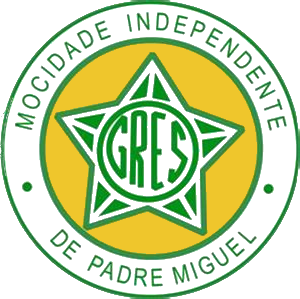
The Grêmio Recreativo Escola de Samba Mocidade Independente de Padre Miguel is a samba school of the city of Rio de Janeiro, being located on Rua Coronel Tamarindo, in the neighborhood of Padre Miguel.
18. Rubens Paiva
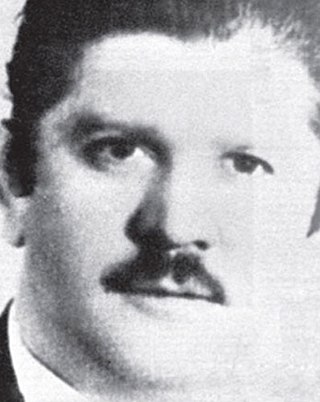
Rubens Paiva was a Brazilian civil engineer and politician who, as a Congressman at the Brazilian Chamber of Deputies, opposed the implementation of a military dictatorship in Brazil in 1964. Due to his involvement with activities considered "subversive" by the dictatorial regime, he was apprehended by the military forces and subsequently tortured and murdered. His body was never found.
19. Igreja Batista Atitude
Attitude Baptist Church is a Baptist multi-site megachurch based in Rio de Janeiro, in Brazil. It is affiliated with the Brazilian Baptist Convention. Josué Vallandro Jr. is its current Pastor-President leading approximately 13,500 members.
20. G.R.E.S. Unidos de Vila Isabel
Grêmio Recreativo Escola de Samba Unidos de Vila Isabel is a samba school in Rio de Janeiro. It was thrice champion of the Special Group and is currently headquartered in Boulevard 28 de Setembro in Vila Isabel.
21. Palácio do Catete
The Catete Palace is an urban mansion in the Flamengo neighborhood of Rio de Janeiro, Brazil. The property stretches from Rua do Catete to Praia do Flamengo. Construction began in 1858 and ended in 1867. It was Brazil's presidential palace from 1897 to 1960, and the site of Getúlio Vargas' suicide. It now houses the Museu da República and a theatre. The Catete underground rail station is adjacent.
22. Teleférico do Pão de Açúcar
The Sugarloaf Cable Car is a cableway system in Rio de Janeiro, Brazil. The first part runs between Praia Vermelha and Morro da Urca, from where the second rises to the summit of the 396-metre (1,299 ft) Sugarloaf Mountain.
23. Praça da Apoteose
The Apotheosis Square is a venue in Rio de Janeiro close to the Morro da Mineira favela. It is part of Sambadrome Marquês de Sapucaí, which can hold a maximum 90,000 people. For concerts, it can hold from 10,000 to 40,000 people.
24. Parque Shanghai
Shanghai Park is an amusement park located in the Penha neighborhood of the municipality of Rio de Janeiro, in the state of Rio de Janeiro, Brazil. It is located near the Church of Nossa Senhora da Penha. Shanghai offers a variety of traditional rides that include one of the oldest operating carousels in the world, two roller coasters, the Enterprise, ghost train, highway, American whip, Ferris wheel, among others.
25. Copacabana's Fort
Fort Copacabana is a military base at the south end of the beach that defines the district of Copacabana, Rio de Janeiro, Brazil. The base is open to the public and contains the Museu Histórico do Exército and a coastal defense fort that is the actual Fort Copacabana.
26. Church of Our Lady of the Candelária
The Candelária Church is an important historical Roman Catholic church in the city of Rio de Janeiro, in southeastern Brazil. It was built and decorated during a long period, from 1775 to the late 19th century. The church combines a Portuguese colonial Baroque façade with later Neoclassical and Neo-Renaissance interior elements.
27. Arcos da Lapa
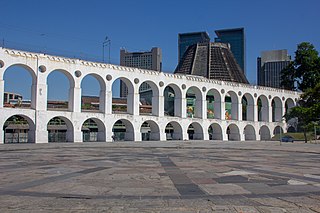
The Carioca Aqueduct, also known as Arcos da Lapa, is an aqueduct in the city of Rio de Janeiro, Brazil. The aqueduct was built in the middle of the 18th century to bring fresh water from the Carioca River to the population of the city. It is a typical example of colonial architecture and engineering.
28. Escadaria Selarón
Escadaria Selarón, locally known as the 'Lapa Steps' for being situated at the "Lapa" neighborhood, is a set of world-famous steps in Rio de Janeiro, Brazil. They are the work of Chilean-born artist Jorge Selarón who claimed it as "my tribute to the Brazilian people".
29. Igreja de Nossa Senhora da Penha
The Basilica Sanctuary of Our Lady of Penha de França, popularly known as the Church of Penha, is a traditional Catholic sanctuary located in the neighborhood of Penha, in the city of Rio de Janeiro, Brazil.
Wikipedia: Igreja de Nossa Senhora da Penha (Rio de Janeiro) (PT)
30. Fundação Casa de Rui Barbosa
The Casa de Rui Barbosa Foundation is an institution linked to the Ministry of Culture, located in Rio de Janeiro, in the neighborhood of Botafogo, located at Rua São Clemente, 134. The institution has its origins in a house-museum, the Casa de Rui Barbosa Museum, created by Decree No. 17,758, of April 4, 1927 and inaugurated on August 13, 1930, located in one of the oldest urban farms in the city, where the Brazilian jurist, politician, lawyer and intellectual Ruy Barbosa de Oliveira lived, from 1895 to 1923. According to the definition of the International Council of Museums (ICOM): "Museum-Houses are historic buildings that have already been inhabited and are open to the public to display original furniture and collections of historical, cultural and ethnographic interest, preserving the spirit of the former owners and the memory of the community".
31. Igreja e Mosteiro de São Bento
The Abbey of Our Lady of Montserrat, more commonly known as the Mosteiro de São Bento (Monastery of St. Benedict), is a Benedictine abbey located on the Morro de São Bento in downtown Rio de Janeiro, Brazil. The Mannerist style church is a primary example of Portuguese colonial architecture in Rio and the country.
32. GRES Unidos da Tijuca
The Grêmio Recreativo Escola de Samba Unidos da Tijuca is a samba school of the city of Rio de Janeiro. It was founded on 31 December 1931 from the fusion of existing blocks in Morro do Borel. Among its founders are Leandro Chagas, João de Almeida, Pacific Vasconcelos, Tatão, Alfredo Gomes, Marina Silva, Orlando da Costa Godinho, Zeneida Oliveira, and Regina Vasconcelos.
33. Rio de Janeiro Cathedral
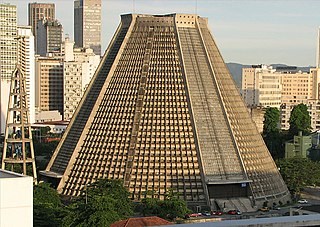
The Metropolitan Cathedral of Saint Sebastian, better known as the Metropolitan Cathedral of Rio de Janeiro or as the Cathedral of St. Sebastian of Rio de Janeiro, is a cathedral of the Catholic Church and the seat of the Archdiocese of São Sebastião. The cathedral is home to the cathedra of the Archbishops of the city of Rio de Janeiro, Brazil. The church is dedicated to Saint Sebastian, the patron saint of Rio de Janeiro.
34. Forte Duque de Caxias
The Duque de Caxias Fort, formerly known as Vigia Fort, Espia Fort and Leme Fort, is located in the Leme neighborhood of Rio de Janeiro, in the state of Rio de Janeiro, Brazil. It is located at the summit of Morro do Leme.
35. Museu Histórico Nacional
The National Historical Museum of Brazil was created in 1922, and possesses over 287,000 items, including the largest numismatic collection of Latin America. The architectural complex that houses the museum was built in 1603 as the St. James of Mercy Fort; earlier structures date back to 1567, erected by order of King Sebastian I of Portugal. In 1693, the Calaboose Prison, for slaves, was built. In 1762, the Casa do Trem was added as a depot of weapons and ammunition. The last additions are the War Arsenal (1764) and the Barracks (1835).
Wikipedia: National Historical Museum (Brazil) (EN), Website
36. Navio-Museu Bauru
USS McAnn (DE-179) is a retired Cannon-class destroyer escort built for the United States Navy during World War II. She served in the Atlantic Ocean and provided escort service against submarine and air attack for Navy vessels and convoys. She was transferred to the Brazilian Navy in 1944 and renamed as Bauru. She is now a museum ship preserved at the Brazilian Navy Cultural Center in Rio de Janeiro.
37. Museu do Indio
O Museu do Índio is a cultural and scientific agency of the Fundação Nacional dos Povos Indígenas or FUNAI. It was created by Darcy Ribeiro, in the city of Rio de Janeiro, Brazil in 1953. As the only official institution in Brazil exclusively dedicated to indigenous cultures, the museum has the objective of promoting an accurate and updated image for the indigenous cause, while avoiding common misconceptions and prejudice of these societies.
38. Templo da Humanidade
The Positivist Church of Brazil was founded on May 11, 1881 by Miguel Lemos. Its headquarters is the Temple of Humanity, where the celebration of the Religion of Humanity, or Religious Positivism, a doctrine created by the French philosopher Auguste Comte (1798–1857), took place.
39. Alto dos Pretos Forros
Serra dos Pretos-Forros is a mountain range located in the city of Rio de Janeiro. It is located between the neighborhoods of Água Santa and Lins de Vasconcelos, and is a natural divider between the neighborhoods of Jacarepaguá and Grande Méier. It is part of sector 4 of the Tijuca Massif. Its western section facing the neighborhoods of Piedade, Quintino Bocaiúva, Praça Seca and Tanque, receives the name of Serra do Inácio Dias.
40. Ponte dos Jesuítas
The Guandu Bridge or, as it is known today, the Jesuit Bridge, is located in the West Zone of the city of Rio de Janeiro, in Santa Cruz and was completed in 1752, with the purpose of regulating the volume of flood water and to facilitate the connection of Santa Cruz with other farms. It was a dam bridge.
41. Antigo Convento de Nossa Senhora do Carmo
The Carmo Convent of Rio de Janeiro is located in Praça XV, in the center of the city. The current convent is located at Rua Morais e Vale, 1111. It was where the queen of Portugal Maria I died in 1816.
42. G.R.E.S. Unidos de Padre Miguel
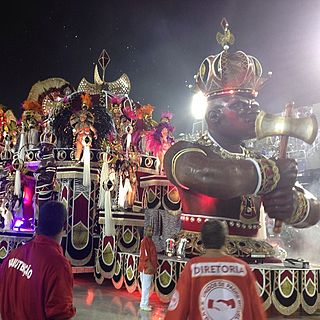
The Grêmio Recreativo Escola de Samba Unidos de Padre Miguel is a samba school of the city of Rio de Janeiro, being located on Rua Mesquita in the neighborhood of Padre Miguel. I came to present themselves among the great, in 1960, 1971 and 1972. After years in which they would wrap the flag gave back on top and Group A, in 2010. but with the addition made by LIERJ, where it originated the series to the school came to be a candidate for the title of this group.
43. Morro Dois Irmãos
Morro Dois Irmãos is a rock formation in the Vidigal neighborhood of Rio de Janeiro. Its top, with 533 meters of altitude above sea level, is higher than Sugar Loaf, but lower than Corcovado, which can be reached through a 1.5 km long trail. Also in the park are a sculpture signed by Oscar Niemeyer and a memorial dedicated by Air France in honor of the victims of flight AF-447.
44. Memorial dos Pretos Novos
The Cemetery of the New Blacks, also known as the Memorial of the New Blacks, is an archaeological site and cultural center located in the neighborhood of Gamboa, in the Central Zone of the city of Rio de Janeiro. It is located at numbers 32, 34 and 36 of Pedro Ernesto Street, in an eighteenth-century mansion. It is managed by the Institute of Research and Memory Pretos Novos.
45. Igreja de Nossa Senhora da Lapa dos Mercadores
The Church of Our Lady of Lapa dos Mercadores is a Catholic church located at Rua do Ouvidor, number 35, between the streets of Mercado and Primeiro de Março, in the historic center of Rio de Janeiro, Brazil. It is right on the corner of Travessa do Comércio, which leads to the touristy and historic Arco do Teles and is owned by the Catholic Brotherhood of the same name, founded in 1750.
Wikipedia: Igreja de Nossa Senhora da Lapa dos Mercadores (PT)
46. Casa França-Brasil
Casa França-Brasil is located in the historic center of Rio de Janeiro, in the state of the same name, in Brazil. This historic property is currently requalified as a cultural center. It is a national cultural heritage, listed by the National Historical and Artistic Heritage Institute (IPHAN), on May 24, 1938, under process No. 101-T-1938.
47. Museu Penitenciário do Estado do Rio de Janeiro
The Penitentiary Museum of the State of Rio de Janeiro, also known by the acronym MPERJ, is a reference in the penitentiary theme of Rio de Janeiro. In addition to preserving and exposing the population with historical moments of the prisons and the inspector of security and penitentiary administration, the MPERJ exhibits illicit materials seized from visitors and prisoners in prison units, from cell phones to objects used for escape, enabling proximity to the current reality of prisons.
Wikipedia: Museu Penitenciário do Estado do Rio de Janeiro (PT)
48. Chinese Belvedere
The Vista Chinesa is one of the belvederes of Rio de Janeiro, at the topmost of one of the roads that connect the Jardim Botânico area to the Parque Nacional & Floresta da Tijuca, known as the Estrada da Vista Chinesa.
49. Igreja da Santa Cruz dos Militares
The Church of Santa Cruz dos Militares is a colonial church in the city of Rio de Janeiro that has the privilege of being added to the Vatican Basilica, since 1923, by Pope Pius XI. It is located in the center of the city, at Rua Primeiro de Março, 36.
50. Palácio Tiradentes
The Tiradentes Palace is an eclectic government building located in the Centro neighborhood (bairro), next to the Paço Imperial in Rio de Janeiro, Brazil. It was inaugurated on 6 May 1926 and was the former seat of the Chamber of Deputies of Brazil, between 1926 and 1960, and is the current seat of the Legislative Assembly of the State of Rio de Janeiro.
51. Pinheiro Machado
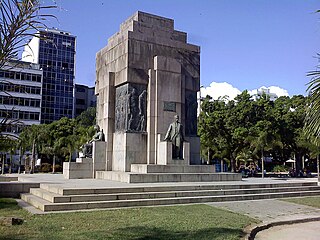
The Monument to Senator Pinheiro Machado is a public monument located in Nossa Senhora da Paz Square, in the neighborhood of Ipanema, in the city of Rio de Janeiro, erected in honor of José Gomes Pinheiro Machado, republican apostle, politician of the Old Republic who contributed with his work and important leadership to the consolidation of the republican regime in Brazil.
52. Santuário de Nossa Senhora de Fátima
The Sanctuary of Our Lady of Fatima is a Marian sanctuary located on Avenida Alfredo Baltazar da Silveira, in the Recreio dos Bandeirantes neighborhood, in the city of Rio de Janeiro, Brazil, composed of a replica of the famous Chapel of the Original Apparitions of Cova da Iria, in the Sanctuary of Fatima, in Fatima, Portugal.
Wikipedia: Santuário de Nossa Senhora de Fátima (Rio de Janeiro) (PT)
53. Morro Dona Marta
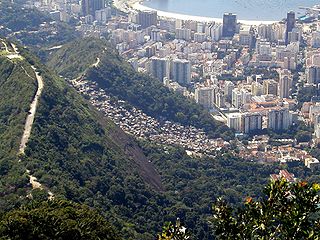
Morro Dona Marta is a landmark located between the neighborhoods of Botafogo, Flamengo, Laranjeiras, Cosme Velho and Silvestre, in the city of Rio de Janeiro, Brazil. In it, the Santa Marta Favela is located. Its highest point is the Dona Marta Viewpoint, with 362 meters of altitude.
54. Real Gabinete Português de Leitura
The Royal Portuguese Cabinet of Reading is a library and lusophone cultural institution, is located in Luís de Camões Street, number 30, in the center of the city of Rio de Janeiro, Brazil. It is listed by the State Institute of Cultural Heritage. Elected the fourth most beautiful library in the world by Time magazine, the Cabinet has the largest collection of Portuguese literature outside Portugal.
Wikipedia: Royal Portuguese Cabinet of Reading (EN), Website
55. Museu da Polícia Civil
The Rio de Janeiro Civil Police Museum is a historical museum in Rio de Janeiro, Brazil. It organizes and promotes permanent and temporary exhibitions of documents and items that portray the activities of Civil Police in the history of Rio de Janeiro since colonial times. It was founded in 1912 and was initially used only for the instruction of police academy students, but opened to the public in the 1930s. The museum is headquartered in a French eclectic style building constructed in 1910 by the architect Heitor de Mello. It is registered under the International Council of Museums as a scientific museum.
56. Museu Casa do Pontal
The Casa do Pontal Museum is a private museum that houses the largest collection of popular art and handicrafts in Brazil, being the most important in the country in this cultural area; It was created by the French-born Brazilian Jacques van de Beuque It is currently located in Barra da Tijuca, Rio de Janeiro. It is "a tourist and anthropological reference not only in Brazil, but worldwide" according to the International Council of Museums (ICOM), an agency associated with Unesco.MATTOS, Juliana Paula Lima de. (2013). The construction of the popular artist and his work: the trajectory of Adalton Fernandes Lopes at the Casa do Pontal Museum (PDF). Rio de Janeiro: Federal University of the State of Rio de Janeiro (UniRio). 84 pages. Retrieved April 23, 2024</ref>.
57. Praça José de Alencar
José de Alencar Square is a square located in the Flamengo neighborhood of Rio de Janeiro, Brazil. It is located at the confluence of the streets of Catete, Conde de Baependi, Barão do Flamengo, Marquês de Abrantes and Senador Vergueiro.
58. Earth Science Museum
The Earth Sciences Museum is a geological museum in Rio de Janeiro, Brazil. The building was part of the National Exposition of Brazil in 1908. Its collection includes minerals, fossils, and geological exhibits. The building was constructed in 1907 for the National Exposition of Brazil and was intended to be permanent. At the exposition, it was the States Pavilion.
59. Museu Internacional de Arte Naïf
The International Museum of Naïve Art (MIAN) was a museum installed in Rio de Janeiro between 1995 and 2016. It had a permanent collection of 6,000 paintings by artists from 120 countries. It had the largest collection of its kind in the world.
60. Praça Nossa Senhora da Paz
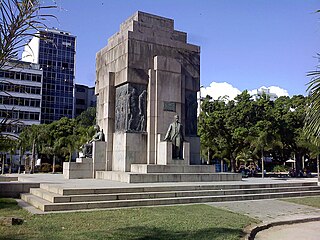
The Nossa Senhora da Paz Square is a public place in the city of Rio de Janeiro, located in the neighborhood of Ipanema. It is located between Visconde de Pirajá, Joana Angélica, Barão da Torre and Maria Quitéria Streets.
61. Espaço Cultural da Marinha
The Navy Cultural Space is a cultural center located in the Centro neighborhood, in the Central Zone of the city of Rio de Janeiro. With an exhibition area of about 1.1 thousand m², it is located on Orla Conde, between Largo da Candelária and Praça XV, subordinated to the Directorate of Historical Heritage and Documentation of the Navy.
62. Edifício A Noite
The Joseph Gire Building, better known as the A Noite Building or Edificio o Jornal A Noite, is an office building located in Rio de Janeiro, Brazil that served as the headquarters of the Rio-based newspaper A Noite. At a height of 102 meters, it was the tallest building in Brazil for two years between 1927 and 1929 before it was surpassed by the Martinelli Building in São Paulo.
63. Praça São Salvador
São Salvador Square is a square in the city of Rio de Janeiro, Brazil, which corresponds to the quadrilateral between São Salvador, Esteves Júnior and Senador Corrêa streets. The square, equipped with a children's playground and a bandstand, is surrounded by bars and residential buildings. It is a predominantly middle-class area.
64. Igreja de São Francisco de Paula
The Church of São Francisco de Paula is a Roman Catholic church located in Largo de São Francisco de Paula, in the historic center of the city of Rio de Janeiro, capital of the Brazilian state of Rio de Janeiro. It is one of the largest temples in the municipality.
Wikipedia: Igreja de São Francisco de Paula (Rio de Janeiro) (PT)
65. Museu da República
The Museum of the Republic is a Brazilian museum located in the city of Rio de Janeiro, more precisely in the historic building of the Catete Palace. Its function is to preserve, investigate and communicate the objects and documents that testify to the memory and history of the republican form of government in Brazil. It is part of the structure of the Brazilian Institute of Museums, a federal agency linked to the Special Secretariat of Culture of the Ministry of Tourism.
66. Nau dos Descobrimentos

The so-called Flagship is a replica of a Portuguese caravel from the fifteenth century, built at the Aratu Naval Base in Brazil, for the celebrations of the 500th anniversary of the Discovery, considered a museum ship, subordinated to the Navy's Directorate of Historical Heritage and Documentation.
67. Perdido do Andaraí
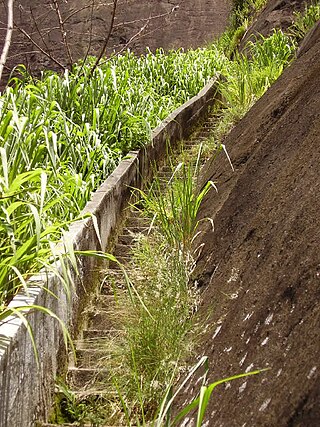
The Pedra do Perdido, also known as Pico do Perdido or even Pico do Perdido do Grajaú, is the main symbol of the Grajaú neighborhood, in the city of Rio de Janeiro. Located within the Tijuca Forest, but in the Grajaú neighborhood, being one of the borders with the Grajaú State Park (PEG). It ended up becoming the symbol of PEG and the Grajaú neighborhood. Many mistakenly confuse it with Pico do Papagaio, which is on the other side of the Tijuca massif, also within the Tijuca forest.
68. Palácio São Joaquim
The São Joaquim Palace or Palace of Mitra Archiepiscopal, located at Rua da Gloria, 446, Gloria, Rio de Janeiro, is an eclectic -style building, built from 1912 to 1918 to be the residence of the first Cardinal Archbishop of Rio de Janeiro, D . Joaquim Arcoverde de Albuquerque Cavalcanti.
69. Palacete Princesa Isabel
The Palacete Princesa Isabel is a building located in the Santa Cruz neighborhood, in the city of Rio de Janeiro. With its architecture reminiscent of the neoclassical style, the construction was intended to house the administrative headquarters of the old Santa Cruz Slaughterhouse. It currently functions as a social center promoting culture in the region, offering a modest library, musical instrument courses, etc.
70. Igreja Nossa Senhora da Conceição
The Imperial Chapel Immaculate Conception is located on Bica Beach, in the Jardim Guanabara neighborhood of Rio de Janeiro. It is one of the oldest buildings in the neighborhood, having its construction begun in 1622, when it was part of the farm that occupied the area. The chapel was only donated to the Archdiocese of São Sebastião do Rio de Janeiro in 1786. Thirty years after the donation, in 1816, the chapel underwent a major renovation, which enlarged its sides - then receiving the shape it retains to this day.
71. Pedra Bonita
Pedra Bonita is a tourist spot located in Tijuca National Park, in the city of Rio de Janeiro, Brazil. More precisely, between Pedra da Gávea and the neighborhoods of São Conrado and Barra da Tijuca. Under the park, it is in sector C, an area geographically isolated from the park headquarters.
72. Teatro João Caetano
The João Caetano Theater is located in Tiradentes Square, in the Brazilian city of Rio de Janeiro. It offers 1,139 seats, including 605 in the audience, 117 in the noble balcony and 417 in the simple balcony. It is the oldest playhouse in the city.
73. Sala Cecília Meireles
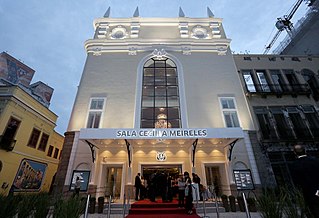
Sala Cecília Meireles is a theatre in the Lapa district of Rio de Janeiro, Brazil. It is noted for its chamber music and is considered to be one of the best venues in terms of acoustics in the city, as well as one of the most traditional in its design. The 670-seat theatre is named in honor of Brazilian author and amateur pianist Cecília Meireles.
74. Yup Star
The Rio Star is a cantilevered observation wheel in the Santo Cristo neighborhood, located in the city of Rio de Janeiro, Brazil. With an overall height of 88 metres, from 2019 to November 2022, it was the tallest Ferris wheel in Latin America; however, it lost the title with the completion of the 91-meter Roda Rico, located in the city of São Paulo.
75. Museu do Universo

The Museum of the Universe is a museum dedicated to astronomy. It was inaugurated in 1970 at number one hundred of Vice-Governador Rubens Berardo Street, in the neighborhood of Gávea, in the city of Rio de Janeiro, Brazil.
76. Morro da Saúde
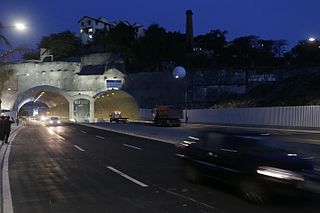
Morro da Saúde is a hill located in the neighborhood of Gamboa, in the Central Zone of the city of Rio de Janeiro. The rocks that make up the hill alternate between soft and hard, a striking feature in geological conditions.
77. Praça Saenz Peña
Tijuca is a neighbourhood of the Northern Zone of the city of Rio de Janeiro, Brazil. It comprises the region of Saens Peña and Afonso Pena squares. According to the 2000 Census, the district has close to 150,000 inhabitants. It borders with Praça da Bandeira, Maracanã, Vila Isabel, Andaraí, Grajaú and Alto da Boa Vista neighbourhoods.
78. Praça General Osório
General Osório Square is a square in Ipanema, Rio de Janeiro, Brazil. The square is bordered to the north by Rua Visconde de Pirajá, the main commercial street in Ipanema; Rua Jangadeiros to the east; Rua Prudente de Morais to the south, which extends west from the square; and the small Rua Teixeira de Melo to the west.
79. Monumento a Marechal Deodoro da Fonseca
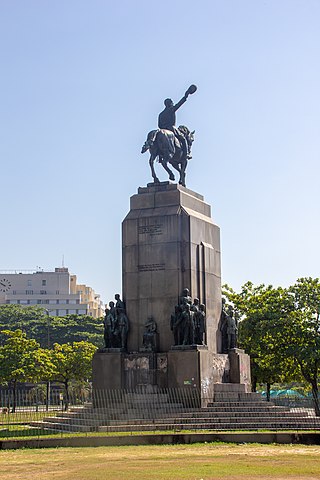
Monument to Marshal Deodoro da Fonseca is a monument in honor of Marshal Deodoro da Fonseca that is located in the city of Rio de Janeiro, Brazil. The monument dates from 1937 and houses the remains of Marshal Deodoro and his wife.
80. Jardins do Palácio do Catete
The historic garden of the Catete Palace occupies an area of 24,000 m2 of the Catete Palace area, connecting Rua do Catete to Flamengo Beach, parallel to Rua Silveira Martins. Its original format, whose design is attributed to the French landscape architect Antoine Glaziou, featured trees of great height, an orchard and the alley of palm trees, already existing on the land since before its acquisition by the Baron of Nova Friburgo.
81. Sítio Roberto Burle Marx
Roberto Burle Marx was a Brazilian landscape architect whose designs of parks and gardens made him world-famous. He is accredited with having introduced modernist landscape architecture to Brazil. He was known as a modern nature artist and a public urban space designer. His work had a great influence on tropical garden design in the 20th century. Water gardens were a popular theme in his work. He was deftly able to transfer traditional artistic expressions such as graphic design, tapestry and folk art into his landscape designs. He also designed fabrics, jewellery and stage sets.
82. Praça Paris
Paris Square is located in the Glória neighborhood, in the Brazilian city of Rio de Janeiro. Designed by French urban planner Alfred Agache, it was built on an embankment in 1926 during the administration of Mayor Antônio Prado Júnior. The project reproduced the layout of a typical Parisian garden and included a large number of large almond trees, works of art and sculptures.
83. Museu Naval
The Naval Museum is located in the center of the city of Rio de Janeiro, Brazil. It is a space intended for the preservation of Brazilian naval memory. In its collection, there are several documents that relate the history of the Brazilian Navy, with an emphasis on Brazilian participation in conflicts.
84. General Osório Statue
Praça XV, also known as Praça XV de Novembro, Praça 15 de Novembro, Praça Quinze de Novembro, Praça 15 or Praça Quinze, is a square located in the Centro neighborhood, in the Central Zone of the city of Rio de Janeiro. In addition to being located on Rua Primeiro de Março, the square is part of Orla Conde, a public promenade that borders Guanabara Bay.
85. Campo de Santana
Campo de Santana, also known as Praça da República, is a park located in the center of the municipality of Rio de Janeiro, in the state of Rio de Janeiro, Brazil. The name of the square is a reference to the fact that it is located in the vicinity of where the proclamation of the Republic of Brazil took place in 1889.
86. Gávea Planetary
The Planetarium Foundation of the City of Rio de Janeiro (PlanetaRio) is an institution, a legal entity governed by public law, linked to the Secretariat of Government and Public Integrity of the municipality of Rio de Janeiro, Brazil. It is dedicated to the dissemination of astronomy and related sciences to the population. It manages two planetariums: the planetarium of Gávea and the planetarium of Santa Cruz. It is headquartered at number one hundred of Vice-Governador Rubens Berardo Street, in the Gávea neighborhood. Opening hours: Tuesday to Sunday from 10:00 am to 5:00 pm.
87. Palácio Laranjeiras
The Laranjeiras Palace is a palace designated as the official residence of the Governor of the state of Rio de Janeiro. It is located in the neighborhood of Laranjeiras, in the city of Rio de Janeiro. It is listed by the National Institute of Historical and Artistic Heritage (IPHAN) and by the State Institute of Cultural Heritage of Rio de Janeiro (INEPAC).
88. Igreja de Nossa Senhora do Monte do Carmo
The Church of Our Lady of Mount Carmel of the Old Cathedral or Old Cathedral, as it is popularly known, is a parish of the Roman Catholic Church, located at Rua Sete de Setembro, nº 14 and Rua Primeiro de Março, in the historic center of Rio de Janeiro. It was the episcopal seat of the Archdiocese of São Sebastião do Rio de Janeiro until 1976, when the new Cathedral of São Sebastião do Rio de Janeiro was completed, which is why it is also referred to as the Old Cathedral.
89. Jardim de Alah
Jardim de Alah is a park located on the border between the neighborhoods of Ipanema and Leblon, in the municipality of Rio de Janeiro, in the state of Rio de Janeiro, Brazil. It has a subway station in its vicinity, called Jardim de Alah Station.
90. Estátua Princesa Isabel
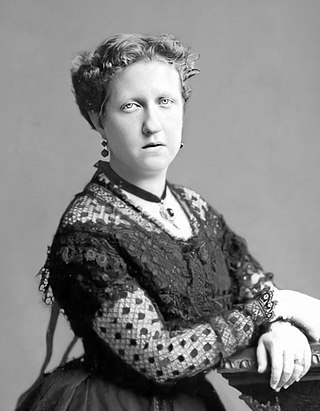
Isabel do Brasil, named "The Redeemer", was the imperial princess and a presumptive heiress to the throne of the Empire of Brazil, who served as regent of the Empire on three different occasions - in one of them, signed the Golden Law, which declared extinct slavery in Brazil . He was the eldest daughter of Emperor D. Pedro II and Empress D. Teresa Cristina, who, after the death of her two male brothers in childhood, was recognized as her father's presumptive heiress. Being a woman, her strong Catholicism and marriage to a foreign prince were seen as impediments against her, along with the emancipation of slaves, who generated discontent between rich farmers.
91. Cidade do Samba
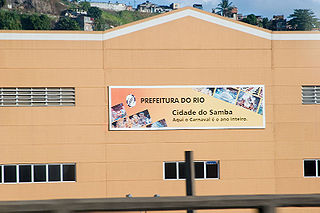
The Cidade do Samba Joãosinho Trinta, also known as Cidade do Samba, is an area intended for the sheds of the samba schools of the Special Group of Rio de Janeiro, located in the heart of the Rio de Janeiro neighborhood of Gamboa, with its main entrance located on Rua Arlindo Rodrigues.
Share
How likely are you to recommend us?
Disclaimer Please be aware of your surroundings and do not enter private property. We are not liable for any damages that occur during the tours.
